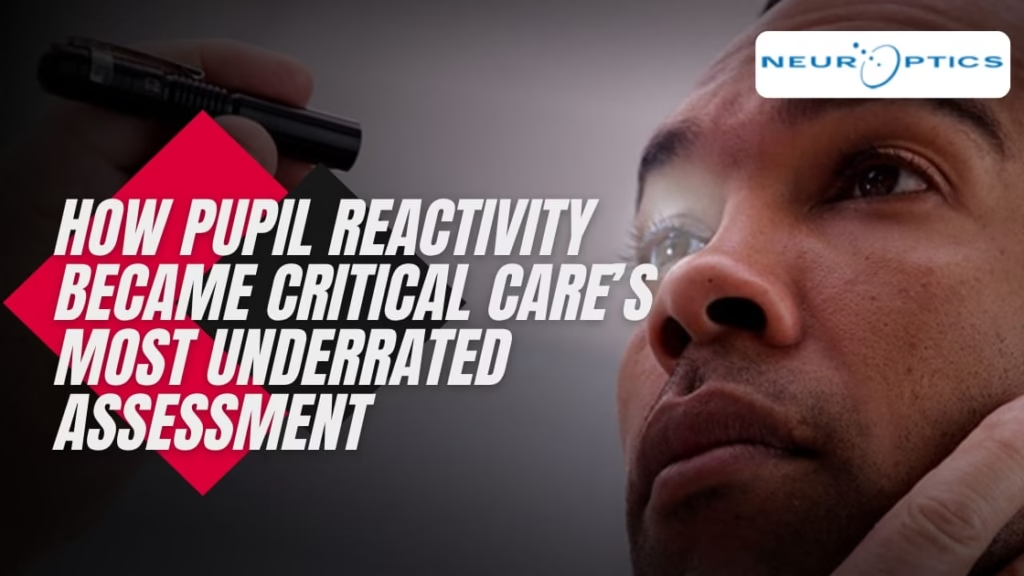In critical care nursing, every second is very important. The smallest observations can make big differences. Among many neurological assessments performed in the emergency care unit, the pupil exam is one of the most important, and it stands out for simplicity and speed. It is one of the most powerful diagnostic tools that can give you information about your brain function.
Modern technology has transformed how we view pupil reactivity. What was once done with a quick flashlight check has now evolved into an advanced and data-driven process, which is very important in any neurological department.
The Importance of Pupil Reactivity in Critical Care
A pupil is considered a mirror of your brain. Slightest change in the size, symmetry, or reaction to light can signal serious neurological issues. In critical care nursing, monitoring the pupil reactivity is a very important part. The pupil tells what’s actually happening inside your brain. If you go through a routine pupil exam, it can reveal early warnings of any brain injury or other life-threatening conditions.
From Flashlights to Precision: The Evolution of the Pupil Exam
For decades, doctors have relied on manual flashlight methods to estimate the reaction of your pupil, leading to making decisions according to their observations. Two clinicians can have different responses to their observation, especially under high-pressure conditions.
This problem faced led to the innovation of an automated pupillometer. This device measures your pupil reactivity with proper precision. This device helped in all kinds of neurological assessments. They use a sensor to record the exact speed and degree to which your pupil reacts to the light. This vital information that you can get within seconds can help you find the slightest issue in your brain. This device helps to eliminate the guesswork and standardise the results.
Understanding What is NPi
NPi gives you a number ranging from 0 to 5. If your NPi is more than 3, your pupil reactivity is normal. If it’s below 3, it indicates a neurological issue that needs proper treatment.
This score is very important for critical care units to track your neurological movements over time. A sudden drop needs immediate care as it can lead to brain swelling or any other life-threatening health issue.
How Pupil Reactivity Enhances Neurological Monitoring
During ICU treatment, where patients need to require mechanical ventilation, continuous neurological assessment becomes very challenging. Pupil reactivity monitoring becomes indispensable in these situations. Use how it supports critical care:
- It helps in the early detection of any kind of neurological decline. These neurological declines can lead to life-threatening situations.
- It helps nurses to monitor the NPi value over time. It can spot deteriorations that may require urgent help.
- Precise, quantitative data helps to align decisions between the entire neurological team.
- Early intervention can prevent any kind of complications.
The Role of Critical Care Nurses in Pupil Reactivity Assessment
While advancement in technology provides tools, critical care, nurses bring life through their expert assessment. Nurses are usually the 1st to notice the smallest neurological changes. Performing pupil exams, can help detect any kind of neurological health issue. Their observation is used to find the smallest change and address it with the proper treatment before it converts into something major and life-threatening.
Future of Neurological Observation
As hospitals are adopting more advanced tools, pupillary evaluation is one of the most important tools in critical care. Soon, automated pupillometry could be integrated directly into patient monitors, providing real-time insights and signs. For emergency care units, this means faster detection and better data, leading to better treatment.
Conclusion
What was once done using a flashlight is now checked using the best technology available. The pupil exam has become one of the most underrated yet important tools in nursing. It offers rapid and important information about your brain system. Early detection can help save a patient’s life. Always remember that the smallest detail can make the biggest difference in saving someone’s life.






